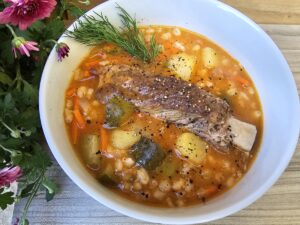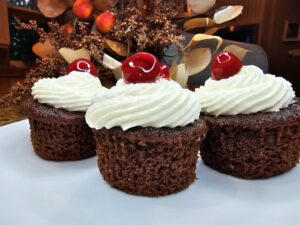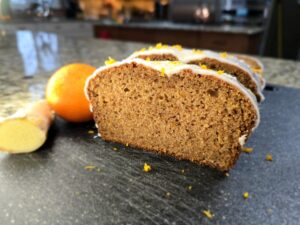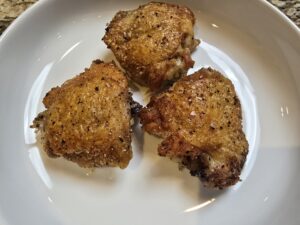Preheat the oven to 325. Set the rack where your cheesecake will bake on to the lower third of the oven. Set another rack under it and place a large baking sheet/pan filled with water; this will be your "cheater" water bath that will ensure the top of your cheesecake doesn't crack.
Combine graham cracker crumbs, sugar and melted butter. Mix well and press into the bottom of 9 inch springform pan. Press it into the sides of the pan about 1 inch high.
Top the mixture with pecan pieces.
Over medium low heat, combine your caramels with milk and allow it to melt. Pour the mixture on top of your prepared crust and pecans. Refrigerate for at least half an hour.
To melt the chocolate - place your semisweet chocolate in a bowl. Place the bowl on top of a pot of barely simmering water. Stir the chocolate periodically with a spatula. When fully melted, remove from heat and allow to cool completely.
In the bowl of your stand mixer, add room temperature cream cheese and beat on medium (start on low) for 3 minutes. Stop to scrape the sides of the bowl and at that point add vanilla and salt. Mix on low and when mixed turn the speed up to medium and beat for another 3 minutes.
Add sugar all at once and beat on medium for 2 minutes. Again, ensure to scrape the sides of your bowl.
This next step is used by pastry chefs to achieve the flawless texture of the cheesecake. Place a fine-mesh sieve over your cheesecake bowl and place your eggs in it. With the rubber spatula, press and whisk the eggs until they pass through the sieve; discard clot-like bits that remain. It may seem impossible at first and that the eggs will never pass through, but trust the process with a bit of patience, and they will! It's important to mix the batter on low for a minute or two, as mixing it on higher speed would aerate the batter too much, and these air bubbles may contribute to cracks.
Again, stop and scrape down the sides of your bowl with a rubber spatula.
Pour about 1/3 of your batter into your cooled melted chocolate and stir well to combine. Pour this mixture back into the rest of the cheesecake batter and fold it well but gently until no streaks remain. Pour this into chilled crust.
Bake in preheated oven for about 50 minutes, until the outside of the cheesecake has firmed up and the centre is almost set. At that point, test the internal temperature. You are looking to get to in between 148 and 152° temperature measured in the middle of your cheesecake. The cake in the picture registered 150 and I found it perfect. At anywhere over 155, in my opinion, the texture suffers.
When baked, turn the oven off, leave the door of the oven wide open, pull out the racks gently so the cheesecake is almost on the outside of the oven. This will facilitate the cooling process while the residual heat from the oven will make the process more gradual, which will prevent cracks. After about 20 minutes run a clean thin butter knife between the cheesecake and the springform pan. This will help your cheesecake settle nicely and be easier to remove later. After an hour at room temperature, cover with the plastic wrap and place into the fridge to chill.
Now comes the hardest part. Wait. And wait a while. My suggestion is overnight. But at least 8-12 hours. We are not just looking to cool the cheesecake. We are looking to give this delicate cheesecake sufficient time to set!
When ready to serve, run a think sharp knife under hot water, wipe it with a paper towel (do so after each cut) and slice your cheesecake. Top with the toping of choice and enjoy!
Ingredients
Directions
Preheat the oven to 325. Set the rack where your cheesecake will bake on to the lower third of the oven. Set another rack under it and place a large baking sheet/pan filled with water; this will be your "cheater" water bath that will ensure the top of your cheesecake doesn't crack.
Combine graham cracker crumbs, sugar and melted butter. Mix well and press into the bottom of 9 inch springform pan. Press it into the sides of the pan about 1 inch high.
Top the mixture with pecan pieces.
Over medium low heat, combine your caramels with milk and allow it to melt. Pour the mixture on top of your prepared crust and pecans. Refrigerate for at least half an hour.
To melt the chocolate - place your semisweet chocolate in a bowl. Place the bowl on top of a pot of barely simmering water. Stir the chocolate periodically with a spatula. When fully melted, remove from heat and allow to cool completely.
In the bowl of your stand mixer, add room temperature cream cheese and beat on medium (start on low) for 3 minutes. Stop to scrape the sides of the bowl and at that point add vanilla and salt. Mix on low and when mixed turn the speed up to medium and beat for another 3 minutes.
Add sugar all at once and beat on medium for 2 minutes. Again, ensure to scrape the sides of your bowl.
This next step is used by pastry chefs to achieve the flawless texture of the cheesecake. Place a fine-mesh sieve over your cheesecake bowl and place your eggs in it. With the rubber spatula, press and whisk the eggs until they pass through the sieve; discard clot-like bits that remain. It may seem impossible at first and that the eggs will never pass through, but trust the process with a bit of patience, and they will! It's important to mix the batter on low for a minute or two, as mixing it on higher speed would aerate the batter too much, and these air bubbles may contribute to cracks.
Again, stop and scrape down the sides of your bowl with a rubber spatula.
Pour about 1/3 of your batter into your cooled melted chocolate and stir well to combine. Pour this mixture back into the rest of the cheesecake batter and fold it well but gently until no streaks remain. Pour this into chilled crust.
Bake in preheated oven for about 50 minutes, until the outside of the cheesecake has firmed up and the centre is almost set. At that point, test the internal temperature. You are looking to get to in between 148 and 152° temperature measured in the middle of your cheesecake. The cake in the picture registered 150 and I found it perfect. At anywhere over 155, in my opinion, the texture suffers.
When baked, turn the oven off, leave the door of the oven wide open, pull out the racks gently so the cheesecake is almost on the outside of the oven. This will facilitate the cooling process while the residual heat from the oven will make the process more gradual, which will prevent cracks. After about 20 minutes run a clean thin butter knife between the cheesecake and the springform pan. This will help your cheesecake settle nicely and be easier to remove later. After an hour at room temperature, cover with the plastic wrap and place into the fridge to chill.
Now comes the hardest part. Wait. And wait a while. My suggestion is overnight. But at least 8-12 hours. We are not just looking to cool the cheesecake. We are looking to give this delicate cheesecake sufficient time to set!
When ready to serve, run a think sharp knife under hot water, wipe it with a paper towel (do so after each cut) and slice your cheesecake. Top with the toping of choice and enjoy!









